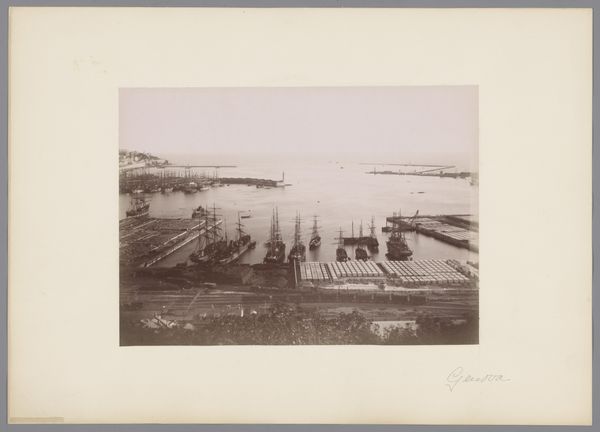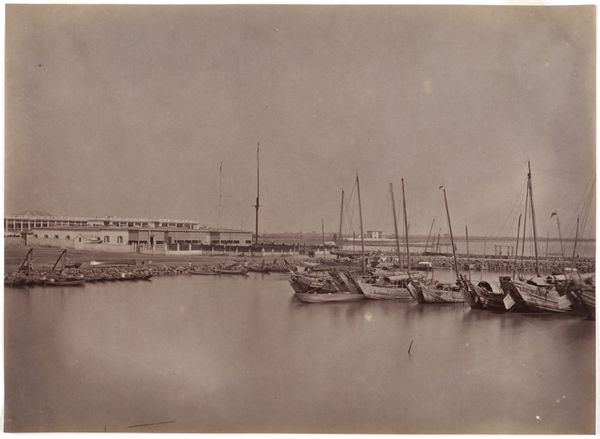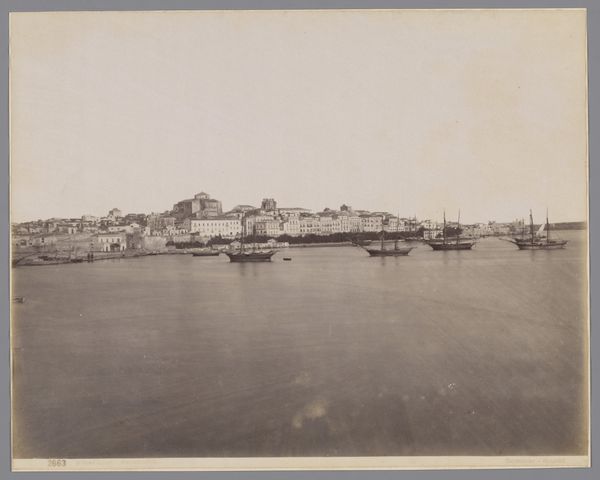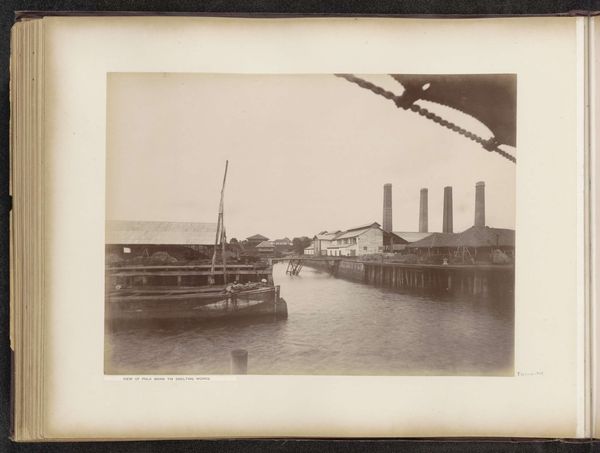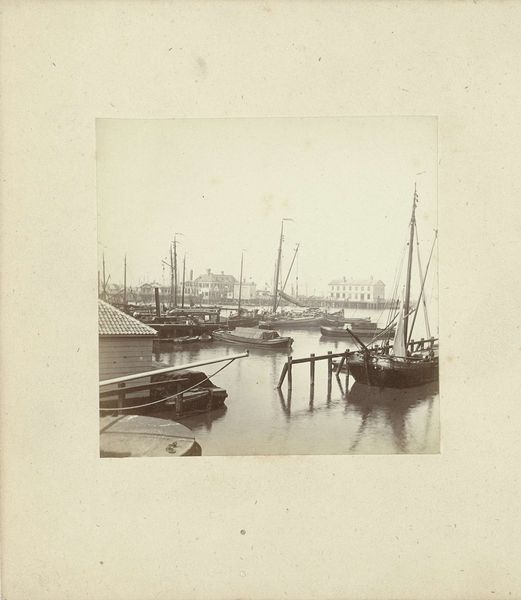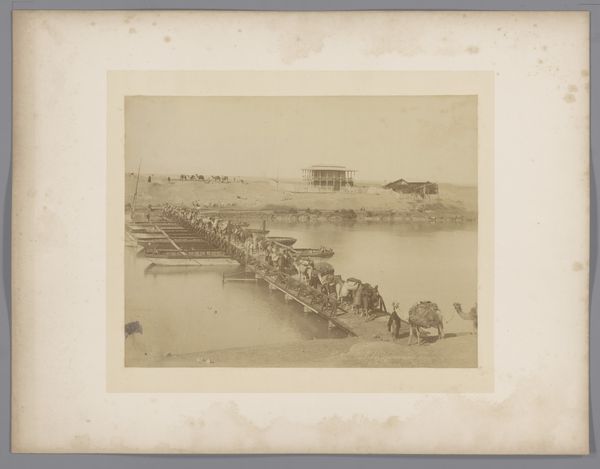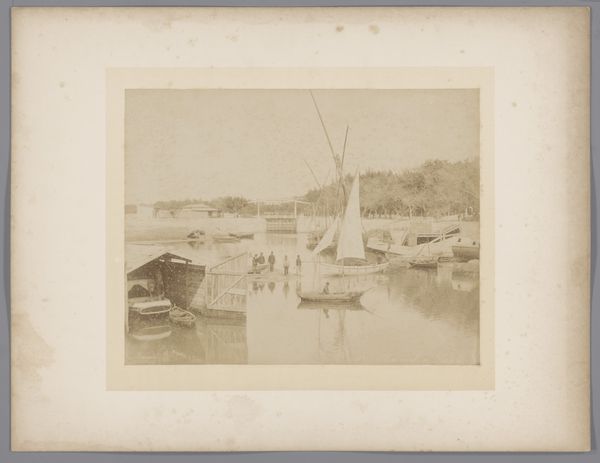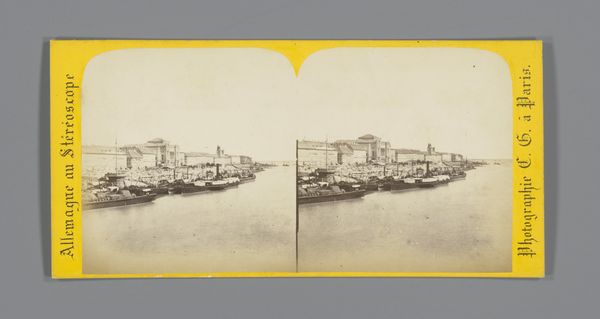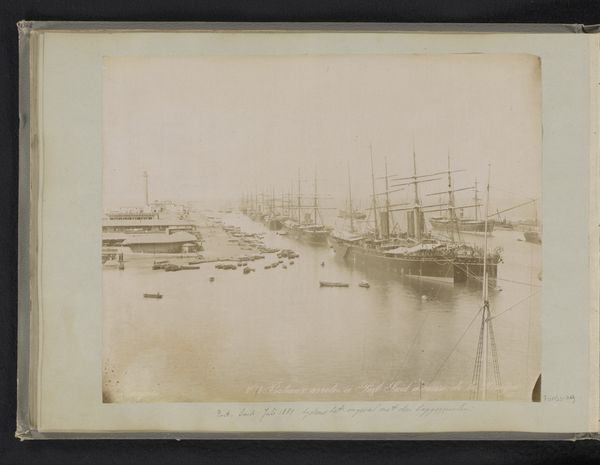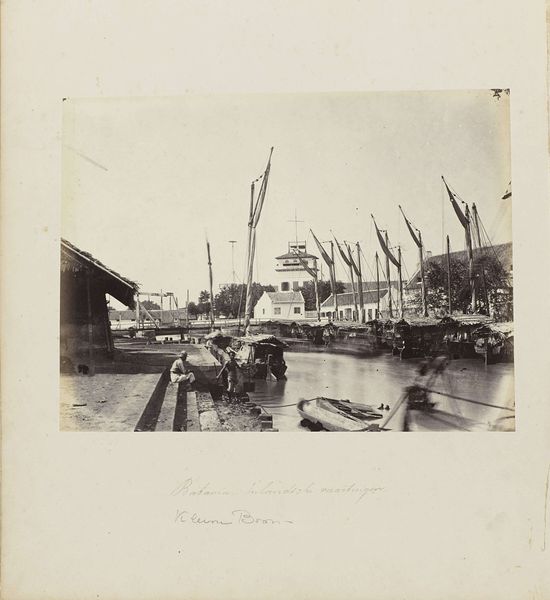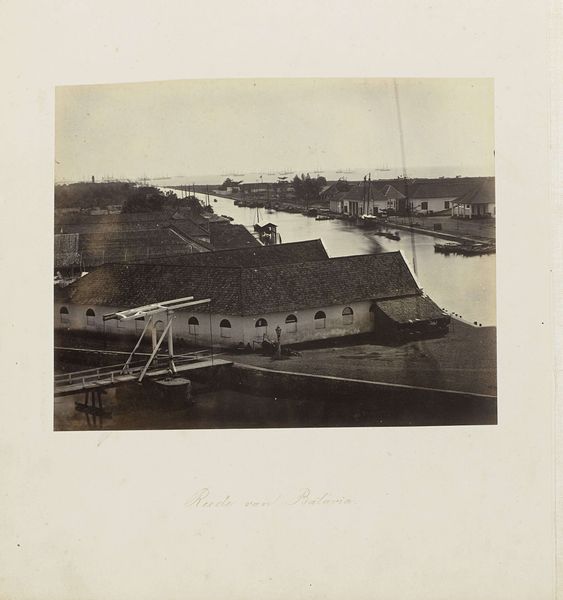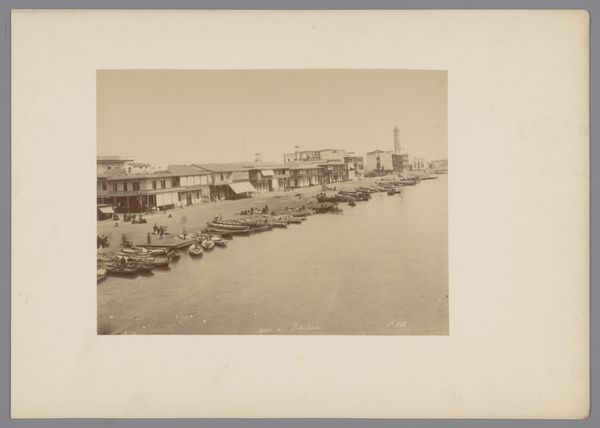
photography, gelatin-silver-print
#
still-life-photography
#
muted colour palette
#
pictorialism
#
landscape
#
photography
#
orientalism
#
gelatin-silver-print
#
cityscape
#
watercolor
Dimensions: height 241 mm, width 329 mm
Copyright: Rijks Museum: Open Domain
Editor: Here we have "View of Docks in Bombay Harbor," a gelatin-silver print taken by F.B. Stewart sometime between 1870 and 1910. There’s almost a watercolor effect with its muted colors and soft focus, creating a serene and rather romanticized depiction of a bustling harbor. How do you interpret this work, particularly considering its historical context and materiality? Curator: Well, let's think about gelatin-silver prints. Their proliferation coincided with the rise of industrial capitalism. Here, we see it used not just for documentation, but to create a picturesque scene. How does the manipulation of this mass-producible material—photography—to evoke painting aesthetic impact your understanding of colonial-era orientalism at play here? Editor: That’s a really interesting point! I guess it softens the impact, almost distancing the viewer from the reality of colonial exploitation, instead focusing on this gentrified view? It’s as if the means of production – gelatin silver printing– are being used to make something that looks like art. Curator: Precisely. Look closer: consider the labor involved in running a port of this scale, a key instrument of colonial extraction. This photo seems to sidestep all that. This gelatin print becomes a vehicle for projecting a desired image, essentially obscuring labor behind the romantic vista. Does that change how you view it? Editor: Definitely. I see how the photograph's very materiality and the choices made in its creation are laden with meaning. Thanks! Curator: It makes us realize that even seemingly objective mediums like photography are deeply intertwined with social and economic structures. A crucial lesson.
Comments
No comments
Be the first to comment and join the conversation on the ultimate creative platform.
